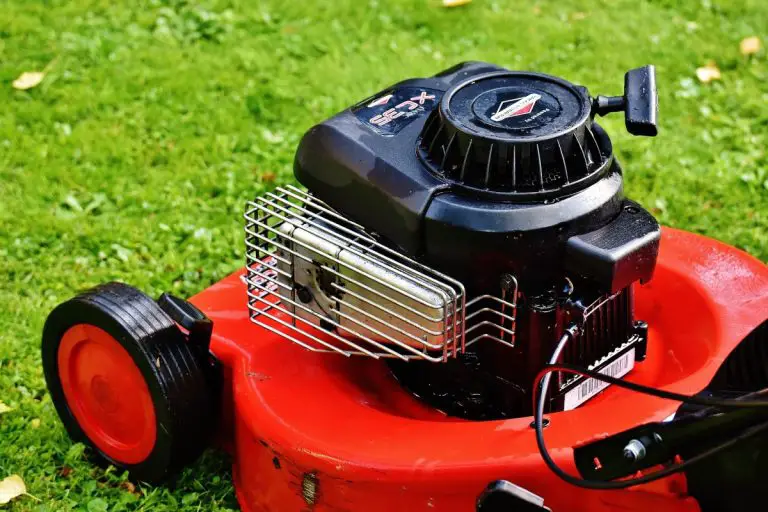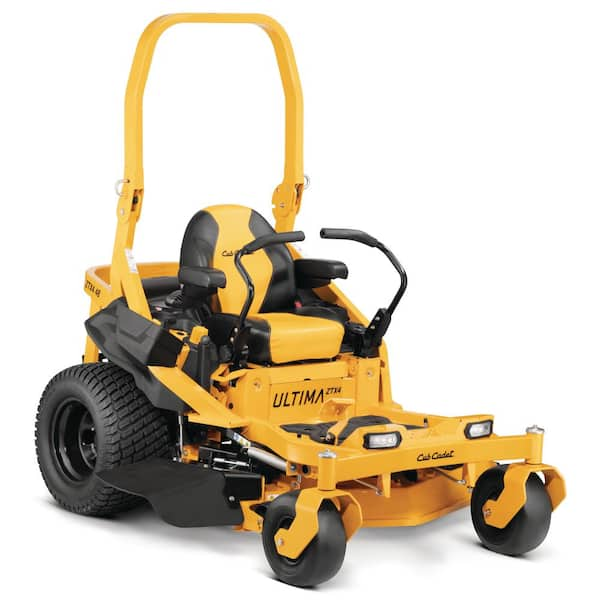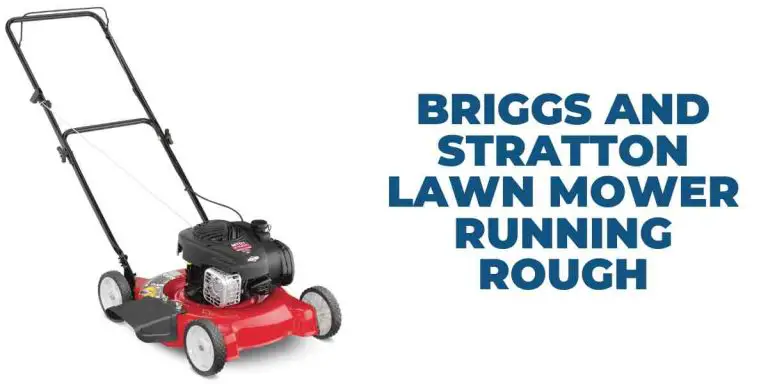Cub Cadet SC 300 HW Won’t Start: Troubleshooting Tips
If your Cub Cadet SC 300 HW won’t start, it could be due to a faulty or disconnected plug, a disconnected spark plug wire, a clogged air filter, a contaminated fuel tank, a faulty carburetor, a dirty cutting deck, or a dysfunctional flywheel brake. Make sure to check these components and clean or replace them if necessary before taking it to the shop.
Is your Cub Cadet SC 300 HW refusing to start? Dealing with a lawnmower that won’t start can be frustrating, but there are several common reasons behind this issue. Before rushing to a repair shop, it’s worth checking a few things yourself to potentially resolve the problem.
This article will guide you through some possible causes of a Cub Cadet SC 300 HW that won’t start, providing you with DIY troubleshooting tips to get your lawnmower up and running again. By following these steps, you may save time and money by fixing the issue on your own.
Common Reasons Why A Cub Cadet Sc 300 Hw Won’T Start
If your Cub Cadet SC 300 HW won’t start, it could be due to various reasons. Some common causes include a faulty or disconnected plug, a clogged air filter, or a contaminated fuel tank. It could also be caused by a faulty carburetor or a dirty cutting deck.
Faulty Or Disconnected Spark Plug:
- A faulty or disconnected spark plug is a common reason why a Cub Cadet SC 300 HW won’t start.
- If the spark plug is not providing the necessary spark, the engine won’t ignite the fuel mixture, preventing the mower from starting.
- To troubleshoot this issue, inspect the spark plug for any signs of damage, such as wear, corrosion, or a broken electrode.
- If the spark plug is dirty or damaged, it may need to be cleaned or replaced.
Disconnected Spark Plug Wire:
- Another common reason for a Cub Cadet SC 300 HW not starting is a disconnected spark plug wire.
- This wire connects the spark plug to the ignition system, allowing the spark to ignite the fuel mixture.
- If the spark plug wire is loose or disconnected, there will be no spark to start the engine.
- Check the spark plug wire to ensure it is securely connected to both the spark plug and the ignition system.
Insufficient Fuel Supply:
- If your Cub Cadet SC 300 HW is not getting enough fuel, it will not start.
- Check the fuel tank to ensure it is filled with fresh gasoline and there are no fuel leaks.
- If the fuel tank is low or empty, refill it with fresh fuel.
- Additionally, ensure that the fuel line is not clogged or blocked, preventing fuel from reaching the engine.
Clogged Fuel Filter:
- A clogged fuel filter can restrict the flow of fuel to the engine, causing the Cub Cadet SC 300 HW to not start.
- Check the fuel filter for any signs of dirt, debris, or clogs.
- If the fuel filter is dirty, it may need to be cleaned or replaced.
- Regularly replacing the fuel filter is important to maintain proper fuel flow and prevent engine starting issues.
Dirty Carburetor:
- A dirty carburetor can prevent the Cub Cadet SC 300 HW from starting.
- The carburetor is responsible for mixing fuel and air in the correct proportions for combustion.
- If the carburetor is dirty or clogged with debris, it can disrupt the fuel-air mixture, causing starting problems.
- Clean the carburetor using a carburetor cleaner or take it to a professional for cleaning if necessary.
Lack Of Oil:
- The engine requires proper lubrication for smooth operation, and a lack of oil can prevent the Cub Cadet SC 300 HW from starting.
- Ensure that the engine has enough oil by checking the oil level using the dipstick.
- If the oil level is low, add the recommended type and amount of oil to bring it to the proper level.
- Regularly checking and changing the oil is crucial for the overall performance and longevity of the engine.
Faulty Ignition Switch:
- A faulty ignition switch can also be the reason why a Cub Cadet SC 300 HW won’t start.
- The ignition switch sends an electrical signal to the starter motor, which starts the engine.
- If the ignition switch is malfunctioning or not engaging properly, it can prevent the engine from starting.
- Check the ignition switch for any signs of damage or wear. If necessary, replace the ignition switch to resolve the starting issue.
1. Checking The Spark Plug
To troubleshoot why your Cub Cadet SC 300 HW won’t start, one essential step is checking the spark plug. Ensure it is clean, connected securely, and functioning properly to fix the issue.
Inspecting The Spark Plug:
Before jumping to any conclusions about why your Cub Cadet SC 300 HW won’t start, it’s important to inspect the spark plug. Here are the steps to follow:
- Start by locating the spark plug, which is usually located near the engine.
- Carefully remove the spark plug wire from the spark plug.
- Examine the spark plug for any signs of damage, such as wear, cracks, or carbon buildup.
- Ensure that the spark plug is clean and free from dirt and debris.
Testing The Spark Plug:
Once you’ve inspected the spark plug, the next step is to test it. Here’s how you can do it:
- Reconnect the spark plug wire to the spark plug.
- Hold the spark plug near a metal surface on the engine, ensuring it’s grounded.
- Pull the starter cord or turn the key to crank the engine.
- Observe if there is a spark visible between the spark plug electrode and the grounded metal surface.
- If you see a spark, it indicates that the spark plug is functioning properly.
- On the contrary, if there’s no spark, it may be a sign that the spark plug is faulty and needs to be replaced.
Cleaning Or Replacing The Spark Plug If Necessary:
If the spark plug shows signs of damage or fails the testing, it may require cleaning or replacement. Here’s what you can do:
Cleaning the spark plug:
- Use a wire brush or spark plug cleaner to clean the electrode and remove any carbon deposits.
- Make sure to clean the spark plug thoroughly, but be gentle to avoid causing any damage.
Replacing the spark plug:
- If the spark plug is severely damaged or cannot be cleaned, it’s best to replace it with a new one.
- Consult your Cub Cadet SC 300 HW manual or visit a local store to find the appropriate spark plug for your mower.
- Follow the manufacturer’s instructions to correctly install the new spark plug.
- Ensure it is properly tightened but avoid over-tightening.
Remember that a functioning spark plug is essential for the ignition process in a lawn mower engine. If you’ve followed the steps above and the Cub Cadet SC 300 HW still won’t start, it may be necessary to explore other possible causes.
2. Ensuring Fuel Supply
In order to ensure fuel supply for your Cub Cadet SC 300 HW that won’t start, check for common issues like a faulty or disconnected spark plug, clogged air filter, contaminated fuel tank, or dirty carburetor. Keep these factors in mind to troubleshoot and address the problem efficiently.
Ensuring Fuel Supply
Before jumping to any conclusions about why your Cub Cadet SC 300 HW won’t start, it’s essential to verify that there is no issue with the fuel supply. Here are some steps to help you ensure a proper fuel supply to your lawn mower:
- Checking the fuel level: Start by checking the fuel level in your Cub Cadet SC 300 HW. Make sure there is enough fuel in the tank to power the engine. If the fuel level is low, fill it up with fresh gasoline.
- Inspecting the fuel tank: Check the fuel tank for any signs of damage or leaks. If you notice any cracks, holes, or leaks, they need to be repaired or replaced before attempting to start the mower.
- Checking the fuel line for any clogs or leaks: Examine the fuel line for any clogs or leaks. A clogged fuel line can prevent fuel from reaching the engine, causing the mower not to start. If you find any clogs or leaks, clear the line or replace it if necessary.
- Verifying the fuel filter condition and replacing if needed: The fuel filter plays a crucial role in keeping the fuel clean and free from debris. Over time, the fuel filter can become clogged, restricting fuel flow to the engine. If the fuel filter is dirty or clogged, replace it with a new one to ensure proper fuel supply.
Remember, ensuring a consistent fuel supply is essential for your Cub Cadet SC 300 HW to start properly. By following these steps and addressing any issues related to the fuel supply, you increase the chances of resolving the starting problem.
3. Cleaning The Carburetor
If your Cub Cadet SC 300 HW won’t start, one possible solution is to clean the carburetor. This can help remove any dirt or debris that may be preventing fuel from reaching the engine and causing starting issues.
Cleaning The Carburetor
Cleaning the carburetor is an important step to resolve starting issues with your Cub Cadet SC 300 HW. The carburetor can get clogged with dirt, debris, or old fuel, preventing proper fuel flow to the engine. Follow these steps for cleaning the carburetor thoroughly:
- #### Removing the carburetor:
- Turn off the engine and disconnect the spark plug wire to ensure safety.
- Locate the carburetor on your Cub Cadet SC 300 HW.
- Remove any attachments or covers that may be obstructing access to the carburetor.
- Disconnect the fuel line from the carburetor carefully.
- #### Cleaning the carburetor thoroughly:
- Use a carburetor cleaner spray to clean the exterior of the carburetor, removing any dirt or debris.
- Carefully disassemble the carburetor following the manufacturer’s instructions.
- Soak the carburetor components in a carburetor cleaner solution to remove built-up deposits.
- Use a small brush to scrub away any remaining debris.
- Rinse all the components with clean water and allow them to dry completely before reassembling.
- #### Reinstalling the carburetor:
- Carefully reassemble the carburetor, making sure all components are correctly positioned and tightly secured.
- Reconnect the fuel line, ensuring a proper seal.
- Replace any attachments or covers that were removed earlier.
- Double-check all connections before starting the engine.
By following these steps and cleaning the carburetor thoroughly, you can address starting issues with your Cub Cadet SC 300 HW. Remember to always refer to the manufacturer’s instructions for specific details regarding your mower’s carburetor.
4. Checking Oil Levels
If your Cub Cadet SC 300 HW won’t start, one important step to check is the oil levels. Ensure that the oil is at the appropriate level before troubleshooting further. Following this guideline can help diagnose the issue and potentially get your mower up and running again.
Verifying The Oil Level In The Engine:
- Check the oil level by locating the dipstick on the side of the engine.
- Remove the dipstick and wipe it clean with a cloth or paper towel.
- Reinsert the dipstick all the way in and then pull it out again.
- Verify that the oil level falls within the designated range on the dipstick.
- If the oil level is below the minimum mark, proceed to the next step.
Topping Up The Oil If Needed:
- To add oil to the engine, first, open the oil cap located on top of the engine.
- Pour small amounts of oil into the opening, then pause and check the oil level with the dipstick.
- Continue adding oil until the level reaches the designated range on the dipstick.
- Be careful not to overfill the engine with oil, as this can cause damage.
Ensuring The Oil Is Clean And Not Contaminated:
- Inspect the color and consistency of the oil on the dipstick.
- Clean, healthy oil should be amber or golden in color, transparent, and free from debris.
- If the oil appears dark, dirty, or contains particles, it may be contaminated and will need to be changed.
- Contaminated oil can lead to engine damage and performance issues.
Remember, maintaining the proper oil level and quality is crucial for the Cub Cadet SC 300 HW’s performance and longevity. By regularly checking the oil levels and topping up if needed, you can ensure that the engine runs smoothly and efficiently.
5. Testing The Ignition Switch
If your Cub Cadet SC 300 HW won’t start, one of the steps to troubleshoot the issue is testing the ignition switch. This can help determine if there is a problem with the switch itself and if it needs to be replaced or repaired.
Checking The Ignition Switch For Any Faults Or Loose Connections:
- Inspect the ignition switch for any visible damage or loose connections.
- Check for any frayed wires or burnt terminals.
- Ensure that all the wires are securely connected to the ignition switch.
- Look for any signs of corrosion or rust on the ignition switch.
- Clean the ignition switch if necessary using a wire brush or electrical cleaner.
Testing The Ignition Switch Using A Multimeter:
- Set your multimeter to the resistance or ohms setting.
- Disconnect the ignition switch from the mower’s wiring harness.
- Connect the red probe of the multimeter to the terminal labeled “B,” and the black probe to the terminal labeled “S.”
- Check the reading on the multimeter. A good ignition switch should have a reading of zero resistance or very low resistance.
- If the multimeter reading shows infinite resistance or a very high resistance, it indicates a faulty ignition switch that needs to be replaced.
Replacing The Ignition Switch If Necessary:
- Locate the ignition switch on your Cub Cadet SC 300 HW mower. It is usually located on the control panel or beneath the engine cover.
- Disconnect the wires connected to the ignition switch by carefully removing the wire connectors.
- Remove any mounting screws or clips holding the ignition switch in place.
- Take note of the exact placement of the wires and connectors before removing the old ignition switch to ensure proper installation of the new one.
- Install the replacement ignition switch by reversing the steps above.
- Connect the wires to their respective terminals and make sure they are securely fastened.
- Test the ignition switch again using a multimeter to ensure it is functioning properly.
Additional Tips And Final Steps
If your Cub Cadet SC 300 HW won’t start, there are a few additional tips and final steps you can follow. Check the spark plug, inspect the fuel line, clean the carburetor, and ensure the air filter is not clogged.
These simple troubleshooting steps can often resolve the issue and get your lawn mower running smoothly again.
Here are some additional tips and final steps to consider if your Cub Cadet SC 300 HW won’t start:
- Checking all connections and wires for any damage or disconnections:
- Ensure that all the connections and wires related to the ignition system are securely attached and not damaged in any way.
- Check for loose wires or any signs of wear and tear that could be preventing the mower from starting.
- Make sure all connections are properly plugged in and tightened.
- Verifying the blades are not jammed or obstructed:
- Check the blades to ensure they are not jammed or obstructed by any debris such as grass clippings, twigs, or stones.
- Carefully clear away any obstruction that could be preventing the blades from rotating freely.
- Inspect the blades for signs of damage or dullness and address any issues accordingly.
- Inspecting the air filter and cleaning or replacing if necessary:
- Remove the air filter and inspect it for dirt, dust, and debris.
- If the air filter is dirty or clogged, clean it using compressed air or wash it with soap and water if it’s a foam filter.
- If the air filter is damaged beyond cleaning, replace it with a new one to ensure proper airflow to the engine.
- Testing the battery if applicable:
- If your Cub Cadet SC 300 HW is equipped with a battery, check its voltage using a multimeter.
- Verify that the battery has sufficient charge and is within the recommended voltage range.
- If the battery is low or not holding a charge, consider replacing it with a new one.
- Consulting the user manual or contacting customer support for further assistance:
- If you have gone through the above steps and your Cub Cadet SC 300 HW still won’t start, consult the user manual for troubleshooting guidelines specific to your model.
- If necessary, contact Cub Cadet customer support for additional assistance and guidance.
Remember to refer to the user manual and follow all safety precautions when working on your Cub Cadet SC 300 HW. By following these additional tips and final steps, you’ll have a better chance of getting your mower up and running efficiently again.
Frequently Asked Questions On Cub Cadet Sc 300 Hw Won’T Start
What Do I Do If My Cub Cadet Won’T Start?
If your Cub Cadet won’t start, there are a few things you can try before taking it to a shop. Check the spark plug, fuel line, air filter, and carburetor for any issues. Make sure they are clean and properly connected.
Tap the side of the carburetor to help the flow of gas if needed. If your mower ran out of gas, it’s possible that the carburetor is dirty and needs to be cleaned.
Why Will My Mower Turn Over But Not Start?
Your lawn mower may turn over but not start due to a faulty spark plug or wire, clogged air filter, or contaminated fuel tank. Other causes can be a faulty carburetor, dirty cutting deck, or dysfunctional flywheel brake.
Why Is My Lawn Mower Not Cranking?
If your lawn mower is not cranking, it could be due to a faulty or disconnected spark plug, a clogged air filter, or a contaminated fuel tank. Other possible causes include a loose, dirty, or disconnected spark plug, a dirty carburetor, a dysfunctional flywheel brake, or fuel not reaching the engine.
Why Wont My Cub Cadet Mower Start After Running Out Of Gas?
After running out of gas, a Cub Cadet mower may not start due to a dirty carburetor. When the gas tank is empty, debris at the bottom gets sucked up and can clog the carburetor. Cleaning the carburetor should solve the issue.
Conclusion
If your Cub Cadet SC 300 HW won’t start, there are several potential reasons. You may have a faulty spark plug, a clogged air filter, or a contaminated fuel tank. It could also be due to a dirty carburetor or a malfunctioning flywheel brake.
Before taking your mower to the shop, try a few troubleshooting steps. Inspect the spark plug, clean or replace the air filter, and tap the side of the carburetor to ensure fuel is reaching the engine. If your mower ran out of gas, it could have a dirty carburetor, so be sure to check that as well.
By following these simple steps, you may be able to get your Cub Cadet SC 300 HW up and running again without the need for professional repairs.





